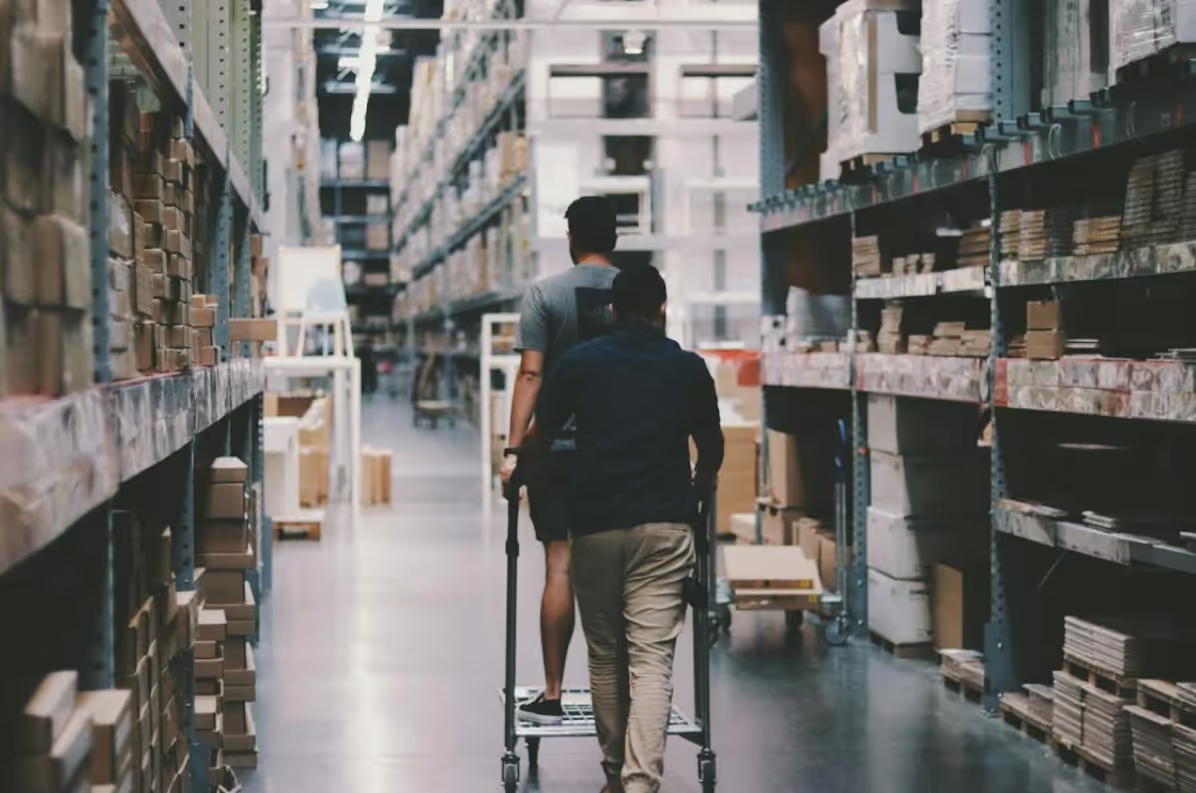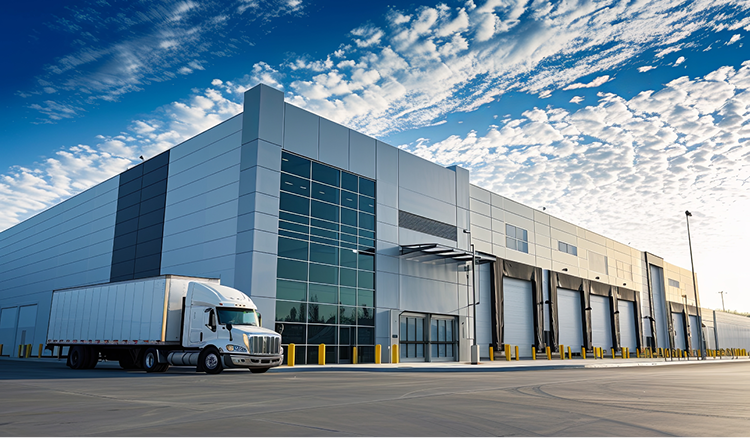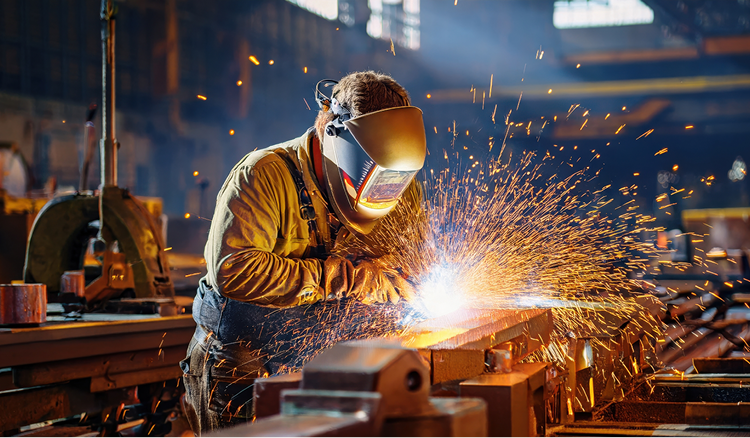Unlocking New Revenue Streams: How 3PLs Can Transform Supply Chains with On-Demand Labor
For years, third-party logistics (3PL) providers have focused on a simple business model: receive, sort, and ship. But as global supply chains evolve and companies look for ways to regain control over their operations, 3PLs face a critical choice—continue as a commodity service or become an essential value-added partner in reshoring efforts.
China remains the dominant force in global manufacturing, accounting for nearly 30% of global production (Statista, 2024). However, increasing tariffs, rising labor costs, and growing geopolitical risks have made direct imports less attractive for U.S. businesses. Companies need a way to balance cost efficiency, speed, and risk mitigation without committing massive capital to full-scale production facilities.
Adding to this shift, with stricter enforcement and possible legislative changes restricting or eliminating the DeMinimus loophole, many companies are now facing the reality that direct import models may no longer be the cost-saving strategy they once were. As a result, businesses that previously relied on small parcel shipments direct from China are now considering alternatives such as importing components and performing final assembly and fulfillment within the U.S.
This is where progressive 3PLs can step in. By offering assembly, finishing, light machining, and packaging services, 3PLs can help businesses reduce tariffs, protect intellectual property, improve quality control, and speed up fulfillment—without forcing them into massive capital investments.
The message is clear: 3PLs that evolve beyond warehousing into value-added services will capture high-margin, long-term contracts. Those that don’t will be left behind.
The Tariff Math: Why U.S. Assembly Can Be More Cost-Effective Than Direct Import
Let’s consider a real-world example.
A U.S. company imports a finished product from China at $150 per unit. The 25% U.S. tariff on the retail price adds $37.50 per unit in duties. However, if the company instead imports the product as separate components at a raw material cost of $35 per unit, the tariff applies to the lower cost—reducing the duty burden to $1.75 per unit. That’s a savings of $35.75 per unit before any additional benefits are factored in.
Now, let’s add a 3PL into the equation. If the 3PL provides assembly, finishing, and packaging services for $10 to $20 per unit, the business still saves $15 to $25 per unit while gaining domestic control over final production, improving responsiveness, and ensuring higher quality standards.
Companies like Apple, Tesla, and Peloton have all strategically leveraged domestic assembly and finishing to reduce costs while maintaining strict quality control over high-value products. The same principle applies at a smaller scale for any business looking to improve margins and de-risk supply chain dependence on China.
Ensuring Proper Tariff Classification
While shifting to a component import model can create significant cost savings, businesses must ensure they are correctly classifying their products for import compliance. U.S. Customs and Border Protection (CBP) enforces strict guidelines on tariff classifications, and misclassification can result in heavy fines or legal repercussions. Importers should work closely with customs brokers and compliance specialists to verify the correct Harmonized Tariff Schedule (HTS) codes for their products.
Additionally, businesses must confirm that their component imports qualify as unfinished goods rather than semi-finished products that could still trigger higher tariffs. By consulting with experts, companies can maximize savings while maintaining compliance with all import regulations.
Intellectual Property & Quality Control: Why Final Assembly Should Happen in the U.S.
Tariffs aren’t the only risk with direct imports from China—intellectual property theft and inconsistent quality are just as costly.
- IP Theft Is a Massive Problem: The U.S. loses an estimated $225 billion to $600 billion annually due to intellectual property theft, with China accounting for the majority of cases (FBI, 2024).
- Counterfeit Goods Are Flooding the Market: In 2022, U.S. Customs and Border Protection (CBP) seized 7,000+ shipments of counterfeit products, with an estimated retail value exceeding $630 million (CBP, 2023).
- Quality Control Issues Are Rampant: According to a study by the American Society for Quality (ASQ), 52% of U.S. manufacturers sourcing from China reported significant quality issues that required costly rework or product recalls (ASQ, 2023).
By keeping final assembly, finishing, and packaging in the U.S., businesses can:
- Secure sensitive designs and critical components, preventing unauthorized replication.
- Ensure direct oversight of quality control, reducing defects and rework costs.
- Minimize counterfeit risks by eliminating third-party intermediaries.
- Qualify for “Assembled in USA” labeling, which 52% of consumers prefer and are willing to pay more for (The Vision Council, 2024).
A 3PL offering final assembly and finishing services enables companies to manufacture affordably in China while safeguarding their brand reputation and product integrity in the U.S.
The 3PL Blueprint: How to Build a Value-Added Operation With Minimal Risk
Many 3PLs hesitate to enter value-added services due to capital investment concerns. However, the reality is that this expansion requires minimal investment when approached correctly and can create a new, high-margin revenue stream.
Step 1: Identify the Right Customers
Not all customers are a fit for value-added assembly and finishing services. 3PLs should target:
- Businesses currently importing finished goods from China at high tariff rates.
- Companies that require light assembly, quality control, or custom packaging before shipment.
- Brands that need fast fulfillment, customization, or final configuration before orders go out to consumers.
Step 2: Build a Simple, Scalable Assembly Process
3PLs don’t need to invest in expensive automation or high-tech manufacturing systems. Instead, they can:
- Set up basic assembly and finishing workstations using minimal capital.
- Invest in small tools, testing stations, and packaging lines to support specific product needs.
- Create a flexible layout that can accommodate multiple product types with minimal reconfiguration.
Step 3: Use Veryable On-Demand Labor to Reduce Risk
Labor is one of the biggest challenges for 3PLs looking to expand beyond warehousing. Hiring full-time employees for a fluctuating workload adds unnecessary fixed costs. Instead, 3PLs can use Veryable's on-demand labor marketplace to:
- Scale up labor instantly during peak production cycles.
- Avoid long-term hiring commitments, reducing overhead.
- Access pre-vetted workers with relevant experience, ensuring consistent quality.
- Quickly respond to demand spikes without overburdening core staff.
Veryable is the key enabler for 3PLs looking to expand beyond warehousing into assembly, finishing, and packaging services without taking on unnecessary risk. With Your Labor Pool (YLP), 3PLs can build a custom network of pre-vetted workers, ensuring consistency in quality and efficiency without fixed labor costs. Additionally, Veryable's operations leadership team provides hands-on support to help 3PLs optimize workflows, improve labor efficiency, and streamline their expansion into value-added services. This combination of labor flexibility, operational expertise, and cost control allows 3PLs to become essential reshoring partners for businesses, capturing new revenue streams while keeping operations lean and agile.
Step 4: Offer a Full-Service Solution
To make value-added services a long-term competitive advantage, 3PLs should:
- Market their assembly and finishing capabilities as a cost-saving and efficiency-boosting alternative to direct import.
- Bundle fulfillment, assembly, and packaging into a seamless service offering.
- Demonstrate ROI to clients by showcasing reduced tariff costs, improved fulfillment speeds, and enhanced quality control.
By positioning themselves as a logistics and assembly partner rather than just a storage provider, 3PLs can capture more revenue per unit shipped while increasing customer retention.
The Future of 3PLs: Reshoring’s Missing Link
The companies reshoring production don’t need another warehouse—they need partners who can handle final assembly, quality assurance, and fulfillment.
3PLs that recognize this shift and act now will position themselves as essential players in the next wave of U.S. manufacturing. This is especially crucial for businesses looking to scale rapidly, handle viral product demand, or offer customization—all of which require agility and domestic control that offshore production cannot provide.
Will your 3PL adapt and capture this opportunity, or will it remain just another storage provider in a rapidly evolving market?
Let’s discuss how Veryable can help you launch value-added services profitably. Reach out today and let’s build the next generation of 3PL capabilities together. To begin your journey now, click here.
Previous Posts
Trump 2.0 Week 12 Recap: Discussing The Reciprocal Tariff Pause, The Escalating Trade War With China, and More
The Future of Manufacturing and Logistics
Create a free business profile today to explore our platform.






